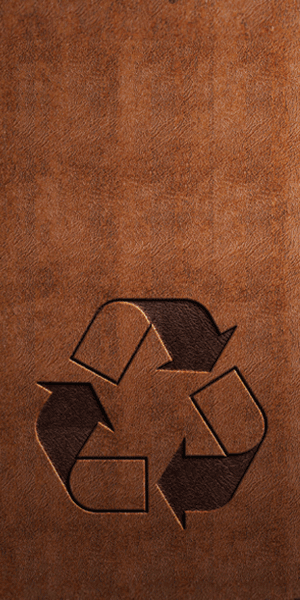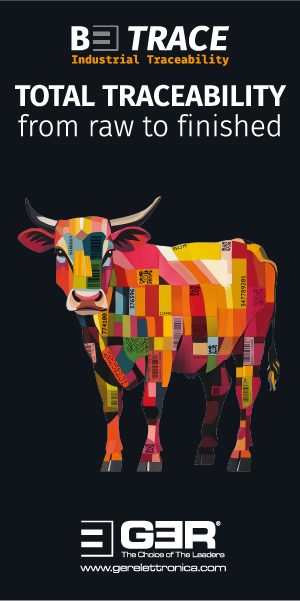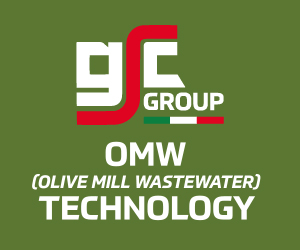Innovative diversification

As part of efforts to expand farming into regenerative practices and conservation projects, a small number of operators in the UK have begun to produce leather from their own hides.
Farmers in the UK are increasingly taking steps to diversify their businesses and some have now begun their own small-scale leather production. The farmers involved have already established a commitment to sustainable and environmentally friendly practices. They feed their livestock exclusively on grass and pasture, keep to high animal welfare standards, offer high-quality meat products and have established an array of conservation projects on their land.
The meat from these farms is celebrated for its unique flavour profile and nutritional benefits, attracting consumers seeking high-quality, grass-fed meat. These products have earned certification by an association called Pasture for Life, which guarantees that the meat comes from animals raised solely on pasture, adding to its desirability. By branching into leather production, these farmers are further broadening their environmentally conscious practices and market offerings.
In a small farm south of Swindon, James and Katie Allen are pioneering a new chapter in sustainable agriculture and traditional craftsmanship. Ten years ago, they began their journey of conservation and regenerative grazing on borrowed land. Today, they own their farm and are venturing into leather production.
Katie Allen has already established Loopy Ewes, a business producing high-end knitwear from the wool of the sheep on the farm. Now, James Allen is setting up a micro-tannery on the property, making use of previously unused sheds. He has been diligently researching and learning leather production, starting with online courses and progressing to hands-on experience.
Mr Allen's journey into tanning began with online courses offered by Matt Richards of Traditional Tanners in the US, who produces various types of leather, including deer, cattle, sheepskins, and buffalo hides. "The online courses were hands-on, as they included workshops where you had to produce pieces of leather—in my case, from sheepskin," Mr Allen explains. "The challenges came with scaling up to cattle hides, particularly fleshing, and adapting formulas from smaller skins to larger cattle hides." To deepen his understanding of leather science, he also completed an online course from the Institute for Creative Leather Technologies (ICLT). More recently, with funding from the British Leather Industry Development Trust, Mr Allen has been provided access to a three-year tannery mentorship programme, with expert guidance from veteran vegetable tanner Barry Knight, from Thomas Ware and Sons.
A significant milestone was a Churchill Fellowship travel scholarship, allowing him to intern at Matt Richards’ tannery in the US, gaining invaluable hands-on experience. “By day two, I was running 20 hides through his fleshing machine,” Mr Allen says. His intention is to keep learning and, before the end of this year, he plans to attend the Lineapelle exhibition in Milan and visit tanneries in Germany and Italy.
While receiving training, James Allen has been developing a tannery with multiple purposes in mind. The primary aim is to produce high-quality, vegetable-tanned cattle leather, which can be fully traced back to individual cows. This will create an additional source of income for the farm. In addition to this, the tannery will be part of a field-to-fibre education initiative. The Allens are building a classroom on the farm to host students from fashion and textile programmes, teaching them about sustainable livestock grazing and the entire process from the field to the finished product. The tannery will also support the establishment of other micro-tanneries, providing internships, apprenticeships, and access to expensive equipment.
They are working with a certification body to have their tannery process certified as organic, aiming to be the first tannery in the UK to produce organically certified bovine leather. As part of this initiative, they will also be installing a reedbed system to process the wastewater from the tanning process, demonstrating their commitment to environmental stewardship.
The tannery, initially designed to process 240 hides per year, will be a modular set-up to accommodate potential future expansion. “For us, the tannery has to cover its running costs, including time, but we aren’t expecting it to be a big income stream for the farm. It is more a question of helping enable the broader income,” Mr Allen explains. This venture aligns with Pasture for Life principles, which are to promote sustainable and regenerative grazing practices. By integrating leather production with conservation efforts, the Allens are creating a holistic model that benefits not only the environment but also the local community and potentially the leather industry as a whole.
Their innovative approach stands as a testament to the potential of combining traditional skills with modern sustainability practices.
Similarly, the Rumming family has been farming cattle along the River Thames at Waterhay near Cirencester and at Lydiard near Swindon for over 60 years. Under Andy Rumming’s stewardship, this farm, too, has earned a reputation for high standards of animal welfare and grass-fed diets, producing high-quality beef.
Also certified by Pasture for Life, this farm embraces regenerative farming practices to enhance biodiversity. This approach not only yields top-quality beef but also premium leather from the farm’s cattle hides. Andy Rumming has worked with Thomas Ware & Sons, a Bristol-based tannery known for traditional methods and quality craftsmanship, to transform the farm’s cattle hides into leather.
The Rumming farm now hosts workshops where participants craft custom sneakers in a single day using traceable leather sourced directly from the farm’s cattle. “We try to farm regeneratively, which means our cattle are building biodiversity rather than wrecking it,” Mr Rumming explains, “while producing top-quality beef and leather. We like to do things ourselves, so we have our own on-farm butchery and sell directly to the public. We have taken this model to our cattle hides. We want to transform them into leather products that we can sell directly.”
The personalised sneaker workshops have been well received so far. Visitors can select various design elements, including sole colour, leather type, and additional features such as eyelets and laces to create tailor-made shoes. Hands-on activities include leather dyeing, cutting, embossing, burnishing, and hand-sewing, culminating in a personalised product that reflects each person’s individual style.
The efforts of the Allens and the Rummings could provide a blueprint for other farmers looking to innovate while maintaining a commitment to sustainable and regenerative agriculture.
James and Katie Allen of Great Cotmarsh Farm with a striking English Longhorn cow, known for its distinctive horns, white stripe, and red brindle coat. This oldest British beef breed helped make England famous for its fine roast beef.
Credit: James Allen/Great Cotmarsh Farm






























